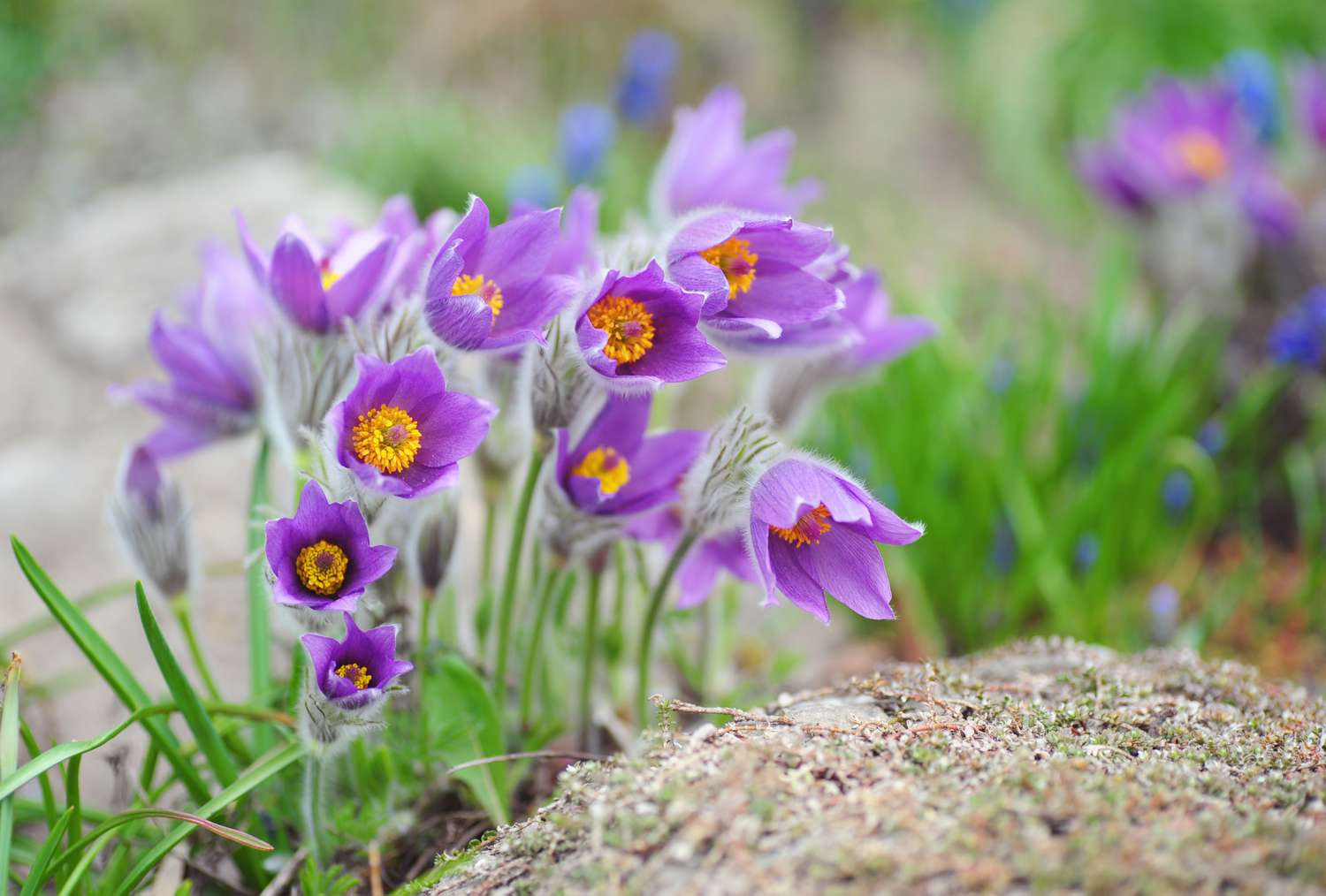
The Pasque flower, also known as Pulsatilla, is a stunning and resilient wildflower that graces various landscapes with its vibrant blooms. This captivating flower holds a rich history and a plethora of fascinating facts that make it a beloved subject of interest for nature enthusiasts and botanists alike. From its symbolic significance to its unique physical characteristics, the Pasque flower continues to captivate and inspire individuals across the globe. In this article, we will delve into 19 intriguing facts about the Pasque flower, shedding light on its cultural significance, ecological role, and distinctive features. Join us on a journey through the enchanting world of the Pasque flower as we uncover the allure and wonder encapsulated within this remarkable botanical marvel.
Key Takeaways:
- The Pasque flower, also known as Pulsatilla, is a resilient and stunning perennial plant native to North America, Europe, and Asia. It blooms early in spring, symbolizing renewal and new beginnings.
- This captivating flower, with its vibrant petals and rich cultural significance, represents themes of rebirth, transformation, and protection. It provides vital nectar for early pollinators and thrives in challenging environments.
The Pasque flower is native to North America, Europe, and Asia.
This exquisite flower can be found in various regions across the globe, from the grasslands of North America to the rocky slopes of Europe and Asia.
It is one of the earliest blooming flowers in spring.
The Pasque flower heralds the arrival of spring with its early blooming period, often gracing the landscape with its colorful display before many other plants have awakened from their winter slumber.
The name "Pasque" is derived from the Hebrew word "Pasakh."
The term "Pasakh" refers to the Jewish holiday of Passover, which typically coincides with the blooming season of the Pasque flower, symbolizing renewal and new beginnings.
Pasque flowers belong to the buttercup family, Ranunculaceae.
This botanical family encompasses a diverse array of flowering plants, and the Pasque flower stands out with its unique characteristics and allure.
The flower's distinctive appearance includes silky hairs and vibrant petals.
The Pasque flower's striking features, such as its silky, hairy stems and vibrant, bell-shaped petals, contribute to its visual appeal and allure.
It is the state flower of South Dakota.
The Pasque flower holds a special place in the heart of South Dakotans, who have embraced it as their state flower, celebrating its beauty and resilience.
Pasque flowers have been used in traditional medicine for centuries.
Throughout history, various cultures have utilized Pasque flowers for their medicinal properties, employing them to address a range of ailments and promote wellness.
The plant is also known for its resilience in harsh environments.
Thriving in challenging conditions, the Pasque flower demonstrates remarkable resilience, withstanding harsh climates and rocky terrains.
Pasque flowers are often associated with folklore and symbolism.
These captivating blooms have inspired numerous myths, folklore, and symbolic interpretations, adding to their mystique and cultural significance.
The flower's seeds are dispersed by the wind.
The Pasque flower's seeds are dispersed by the wind, allowing it to propagate and thrive in diverse environments, contributing to its widespread presence.
The Pasque flower's bloom color can vary from purple to white.
While the classic image of the Pasque flower features vibrant purple blooms, some varieties showcase delicate white petals, adding to the diversity of this enchanting plant.
It is a popular choice for rock gardens and natural landscaping.
Gardeners and enthusiasts appreciate the Pasque flower for its suitability in rock gardens and naturalistic landscapes, where its beauty can shine amidst rugged terrain.
The plant is known for its drought tolerance.
Admired for its ability to withstand dry spells, the Pasque flower exemplifies resilience and adaptability in the face of challenging environmental conditions.
Pasque flowers are a favorite subject for botanical artists and photographers.
The captivating allure of the Pasque flower has inspired artists and photographers to capture its beauty, resulting in stunning botanical illustrations and mesmerizing photographs.
The flower's name, Pulsatilla, is derived from the Latin word "pulsare."
The Latin term "pulsare," meaning "to sway," aptly reflects the graceful movement of the Pasque flower's delicate petals in the gentle breeze.
It is a valuable source of nectar for early pollinators.
As one of the first flowers to bloom in spring, the Pasque flower provides a vital source of nectar for early pollinators, supporting the ecosystem's delicate balance.
Pasque flowers have been celebrated in poetry and literature.
Renowned poets and writers have been inspired by the ethereal beauty of Pasque flowers, weaving their charm into timeless verses and literary works.
The flower's symbolism includes rebirth, transformation, and protection.
Embodying profound symbolism, the Pasque flower represents themes of rebirth, transformation, and protection, resonating with individuals seeking hope and renewal.
The Pasque flower's conservation status varies across its native range.
While the Pasque flower thrives in certain regions, it faces conservation challenges in others, prompting efforts to protect and preserve this cherished botanical treasure.
The Pasque flower, with its rich history, captivating symbolism, and enduring beauty, continues to enchant and inspire nature enthusiasts, artists, and storytellers around the world. From its early spring emergence to its cultural significance, this resilient flower stands as a testament to the wonders of the natural world.
Conclusion
In conclusion, the Pasque flower is a fascinating and resilient plant that holds a special place in the natural world. Its vibrant blooms, early spring emergence, and symbolic significance make it a beloved and cherished wildflower. From its historical uses in traditional medicine to its role as a vital pollinator resource, the Pasque flower continues to captivate and inspire nature enthusiasts and botanists alike. As we celebrate its beauty and significance, let's also strive to protect and preserve this precious wildflower for future generations to enjoy.
FAQs
What is the significance of the Pasque flower?
The Pasque flower holds cultural and symbolic significance in various traditions and folklore. It is often associated with rebirth, new beginnings, and the arrival of spring, making it a cherished symbol of hope and renewal.
Where can Pasque flowers be found?
Pasque flowers are native to a variety of regions, including meadows, prairies, and open woodlands in North America, Europe, and Asia. They thrive in well-drained, sandy or rocky soils and are often found in sunny or partially shaded locations.
Was this page helpful?
Our commitment to delivering trustworthy and engaging content is at the heart of what we do. Each fact on our site is contributed by real users like you, bringing a wealth of diverse insights and information. To ensure the highest standards of accuracy and reliability, our dedicated editors meticulously review each submission. This process guarantees that the facts we share are not only fascinating but also credible. Trust in our commitment to quality and authenticity as you explore and learn with us.


